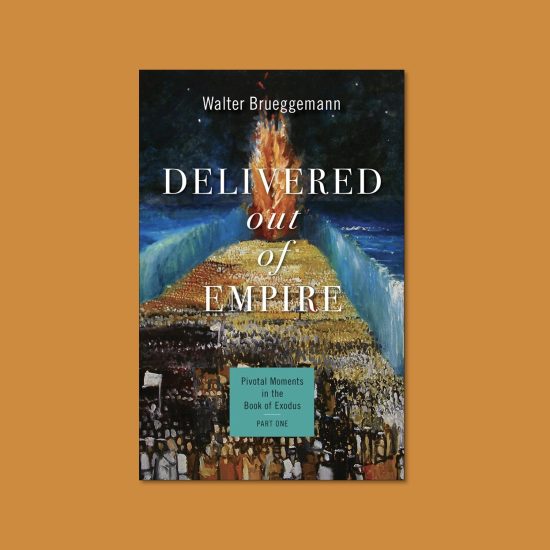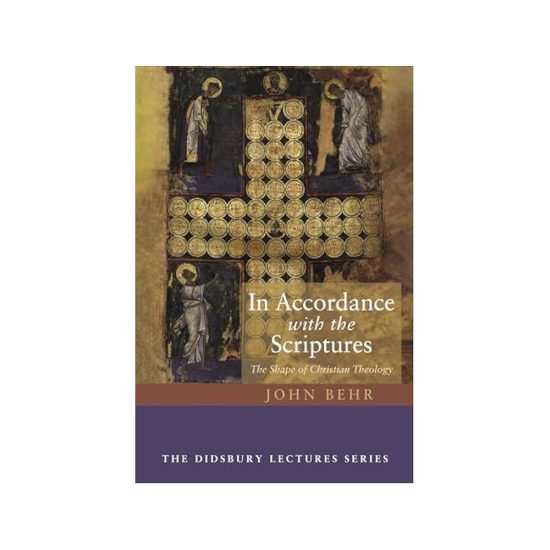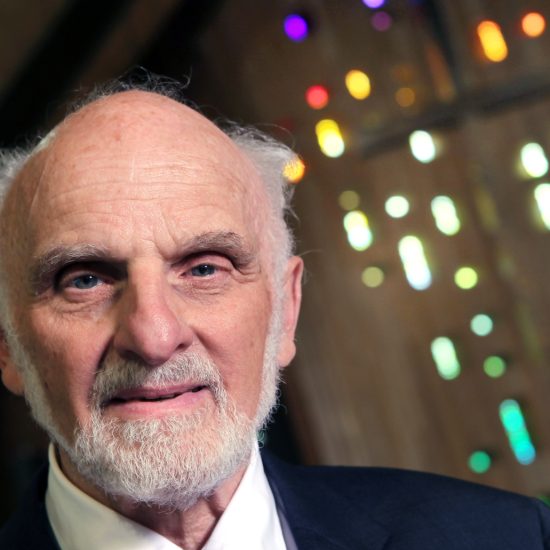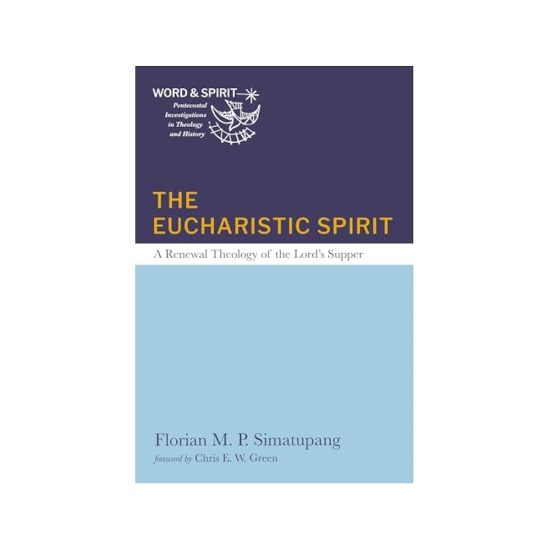

WALTER BRUEGGEMANN’S PROPHETIC IMAGINATION: A Theological Biography. By Conrad L. Kanagy. Foreword by Samuel Wells. Minneapolis, MI: Fortress Press, 2023. Xxxi +215 pages.
If you are a preacher, at least in Mainline Protestant circles, you know the name of Walter Brueggemann. He continues to be one of the most influential Old Testament scholars of our day and has been for the last half-century. Brueggemann is a leading Bible scholar, but he is not just an academician. He is first and foremost a scholar who works on behalf of the church. We who preach and teach have come to value his wisdom and insight, whether it comes to us through his books and commentaries or his speeches and sermons. Even when I don’t agree with his assessment, he still makes me think. I have had the privilege of not only reading Brueggemann but meeting him. In fact, I moderated a panel discussion that involved responses to earlier presentations and his responses. What makes him somewhat unique is that not only does he write about the prophets, especially Jeremiah, but also has the countenance and bearing of a prophet. I’ve only encountered him in recent decades, but his tall lanky body, balding head, and scruffy beard give that vibe. The question is, who is Walter Brueggemann? Where did he come from and how did he become such an influential scholar, teacher, and preacher?
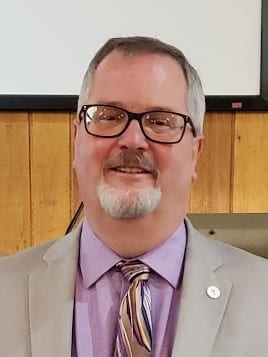
Robert D. Cornwall
The answer to the questions raised by enquiring minds is given to us, at least in part, by Conrad Kanagy, in his biography of Walter Brueggemann. Kanagy’s biography quite appropriately carries the title Walter Brueggemann’s Prophetic Imagination: A Theological Biography. Kanagy’s title draws from Brueggemann’s best-known and most influential book: The Prophetic Imagination, a book that was originally published in 1978 and continues to speak to preachers and scholars. Perhaps the reason why that book and Brueggemann himself continue to speak is because, as Samuel Wells, in his Foreword, writes “Walter believes in the God of the Scriptures.” He doesn’t avoid the difficult biblical passages but instead invites us to deal with them, rather than sanitize and refract to render a more wholesome deity” (pp. x-xi). In other words, he believes in the God found in the text. He is also a theologian who believes in the church. Thus, again quoting from Wells in words I can affirm: “Most people who’ve read his books or attended his sermons see Walter as a towering figure, mission only sandals and a crooked figure to be [a] hectoring prophet of the Old Testament.” Of course, he is much more than that, and Kanagy tells that fuller story.
The author of this biography is Conrad Kanagy, a professor of sociology at Elizabethtown College. Now it may seem odd that a sociology professor would write a biography of a biblical scholar, but it is not as odd as you might think. That is because Brueggemann not only studied sociology as an undergraduate at Elmhurst College, but he has drawn liberally from sociology and the social sciences in his biblical scholarship. As for Kanagy, as a sociologist, he has focused his attention on American and global Christianity. It is in that context that he “first met Walter Brueggemann in the library stacks of Elizabethtown College.” It’s not that Brueggemann was visiting the college, but it was there in 2006, while researching his own Mennonite denomination, that he stumbled upon Brueggemann’s books as he was looking for commentaries on the Book of Jeremiah. The book through which he encountered Brueggemann was The Prophetic Imagination. What he discovered there was the revelation “that perhaps God was in the middle of the church mess I had uncovered. Perhaps God was even responsible for the mess!” (pp. xiii-xv). He again turned to Brueggemann’s works in 2021 as he was working on a sermon on racism even as some members of his congregation had come under Donald Trump’s spell. In this case, Kanagy wrote to Brueggemann seeking guidance, a query that Brueggemann answered. Kanagy asked Brueggemann whether there was a biography that could do for him than what The Prophetic Imagination had done for him a decade and a half earlier. Brueggemann wrote to tell Kanagy that he couldn’t come up with a biography of the sort Kanagy had asked for, which led Kanagy if he could write Brueggemann’s story. Though, as Samuel Wells notes, Brueggemann is a shy man he agreed to the request, though he didn’t believe there was much to write about. Brueggemann might not have thought there was enough material to fill a biography, Kanagy’s biography demonstrates that there is much to be learned from Brueggemann’s story.
Kanagy makes an important point. He hasn’t attempted to interpret everything Brueggemann has written. While there might be value in such a book, which would likely be highly technical, Kanagy seeks to paint in broad strokes Brueggemann’s life, seeking to show how his writings, teaching, and preaching have impacted so many people and churches. Therefore, Kanagy tells the story of a man who has influenced so many people that is based on a series of Zoom calls with Brueggemann along with interviews with colleagues, friends, and students. From that foundation, Kanagy seeks to “look into Walter’s inner life with God, searching for the answer to what of divinity has produced and sustained the quality and quantity of Walter’s work.” What we learn is that there are no categories that fully describe his own spirituality, but it is there.
Kanagy divides the story of Brueggemann’s life into three parts using the idea of The Prophetic Imagination as the central lens. Beginning in Part 1, we encounter two chapters. The opening chapter introduces us to Brueggemann the scholar who discovered the prophetic imagination as the way to understand Scripture. We learn here that Brueggemann was committed to his scholarship, trying to find time away each day, writing (long hand) the equivalent of twelve pages double-spaced each day in about two to three hours. His understanding of the text was influenced greatly by his doctoral mentor James Muilenburg, who introduced him to rhetorical interpretation as an alternative to the dominant historical-critical method, which both Muilenberg and his students found static and didn’t speak to modern concerns. After graduating from Union Seminary with his Ph.D. he returned to his beloved Eden Seminary, where he not only did his seminary work but where his father had studied before him. He began teaching at Eden in 1961, but it was not until 1978 that his breakthrough book, The Prophetic Imagination, was published. Before that took place, Brueggemann had taken on the role of dean of the seminary at a time when the seminary was in decline and the possibility of closure was real. Thus, he tried to combine scholarship, teaching, and administrative leadership. In this chapter, we are not only introduced to his scholarship but also to his origins as the son of a pastor in the Evangelical Synod of North America, an expression of the Prussian Union. His people had come from Germany and settled in Missouri, which is where Eden was situated. It was a seminary that had been led by H. Richard Niebuhr and had educated his brother Reinhold. Together the Niebuhrs had a profound influence on the seminary. One thing to note here is that Kanagy doesn’t take us chronologically through Brueggemann’s life. We will come and go in time. But the chapter does introduce us to his childhood, at least briefly before taking us to Union Seminary. One thing that is very important to this story is the influence of his father, who was rather poorly trained and very poorly paid, but who was committed to his ministry and the importance of education for both Walter and his brother Edward. We also learn here that Brueggemann, who was brilliant, always felt a bit under-educated due to his origins. Of course, the success of The Prophetic Imagination changed all of that.
If the first chapter lays the foundation, the second chapter “Where Prophets Come From” takes us back to Brueggemann’s origins. We gain a clearer insight into his childhood and education, along with the influence of his parents. One of the things we learn is that as a teenager, with the permission of his father, he and his brother would attend the black church on the edge of town, gaining insight into the lives of people different from him. That would influence his later commitment to social justice. We learn more here about his father’s calling and the roots of the Evangelical Synod, which would later merge with the German Reformed Church before merging into the United Church of Christ. The churches that made up the Evangelical Synod had their origins in the Prussian Union, an ecumenical merger of Lutheran and Reformed churches in Prussian that took place in the nineteenth century. The pastors who led these churches in places like Missouri were originally missionary pastors who tended to be poorly educated and paid. While this was true of Brueggemann’s father, his father made sure he was well-educated. Nevertheless, it is out of this ethos that a prophetic imagination was born in Brueggemann.
If Part 1 offers us Brueggemann’s origin story (and I’ve only hinted at what is there), in the three chapters in Part 2, we delve more fully into Brueggemann’s scholarship. In chapter three titled “Imagination Everywhere” we discover that in a world of specialists, Brueggemann chose to be a generalist. This placed him at the edge of the academy, at least until the publication of The Prophetic Imagination. That book provided a platform for Brueggemann to speak to both the church and academy, prophetically telling each that they had been domesticated and needed liberating.
In Chapter 4, titled “Pivoting Here and There,” we learn how Brueggemann pivoted away from moralism to a more prophetic stance that drew from such sources as Marx so he could speak to economic and other justice issues. He did this not to enhance his status in the academy but for the church. Then in the fifth chapter, Kanagy reminds us that Brueggemann devoted himself to the text of scripture. For Brueggemann, if there is no text there is no God. Kanagy shows how both the left and right had problems with Brueggemann. On one hand, the left was puzzled by his commitment to the biblical text while the right didn’t understand his commitment to social justice. However, in Brueggemann’s mind, everything had to do with the biblical text. As he gained notice in the academy, despite his departure from scholarly orthodoxy, in the 1980s he would move from Eden to Columbia Theological Seminary, a PCUSA seminary in Georgia. That move gave Brueggemann more time and resources for his writing, which was a gift to the church.
Finally, in Part 3 we encounter Brueggemann in his later years. After he retired from Columbia Seminary, he moved to Cincinnati. After this move, he joined an Episcopal Church, where he found a church and its pastor who understood text, justice, and the nature of the church to fit his vision. We learn more here about Brueggemann’s human side and some of the struggles he had in life. We also encounter his prayers, which are deeply rooted in scripture and reflect his poetic sense (after all he spent much time with the Psalms). This penultimate chapter is titled “The Secret.” The reason for that title is, as Kanagy notes, Brueggemann’s prayers are the “secret core from which all of his work and writing emerge.” (p. 176). The final chapter is titled “Where Prophets Go,” which brings some closure to the story. Kanagy also reveals that while he hoped Brueggemann’s story would provide some assurance that this prophetic path would provide some comfort. Kanagy didn’t find that, but he discovered what Brueggemann already knew. What he discovered was that prophets return to scripture, from which they can proclaim an alternative message to that of the empire.
When I saw that a biography of Brueggemann was forthcoming, I knew I had to get a review copy from the publisher. I wanted to know what made him tick, and then share the news with others. Having read the book, I can say that I now have a better sense of Brueggemann’s life and message. As I read his story, I discerned both why I appreciated Brueggemann’s work and words, even as those words have at times made me feel rather uncomfortable. In many ways, it confirmed what I believed about him, but now I know more about the origins of his story. I also came to a better understanding of why I appreciate his work, and that is his commitment to the text of scripture. As a progressive Christian, I find some in my camp’s attempts to distance themselves from scripture unsettling. It’s not that we must embrace everything literally without interpretation, but scripture should be the touchstone of our faith. Brueggemann shows us how and why this is true. In that regard, Kanagy does a nice job connecting the dots. While I thoroughly enjoyed Kanagy’s biography — Walter Brueggemann’s Prophetic Imagination, I did discover several problematic editing issues. For instance, in several places, names were misspelled, such that at points he called Jim Wallis Jim Wallace. He also added an H to Reinhold Niebuhr’s name, calling him H. Reinhold. The H belongs with Richard, something he fails to do in the book. Additionally, there is a reference to the “Book of Hezekiah.” While he did discuss Hezekiah, there is no such book of Hezekiah (except in jokes). These are not big issues, but they detract from the story and could be avoided with a little better editing. Despite these issues, I can say that I truly enjoyed reading Kanagy’s theological biography of one of the most influential scholars of our day. What he demonstrates with this biography is that there is much that can be said about Walter Brueggemann, despite Brueggemann’s suggestion otherwise. So, if Brueggemann has influenced you, you will want to read Walter Brueggemann’s Prophetic Imagination, even as you continue to read Brueggemann himself.
This review originally appeared on BobCornwall.com.
Robert D. Cornwall is an ordained minister in the Christian Church (Disciples of Christ). Now retired from his ministry at Central Woodward Christian Church (Disciples of Christ) of Troy, Michigan, he serves as Minister-at-Large in Troy. He holds a Ph.D. in Historical Theology from Fuller Theological Seminary and is the author of numerous books including his latest “Second Thoughts about the Second Coming: Understanding the End Times, Our Future, and Christian Hope” coauthored with Ronald J. Allen. His blog Ponderings on a Faith Journey can be found at www.bobcornwall.com.

